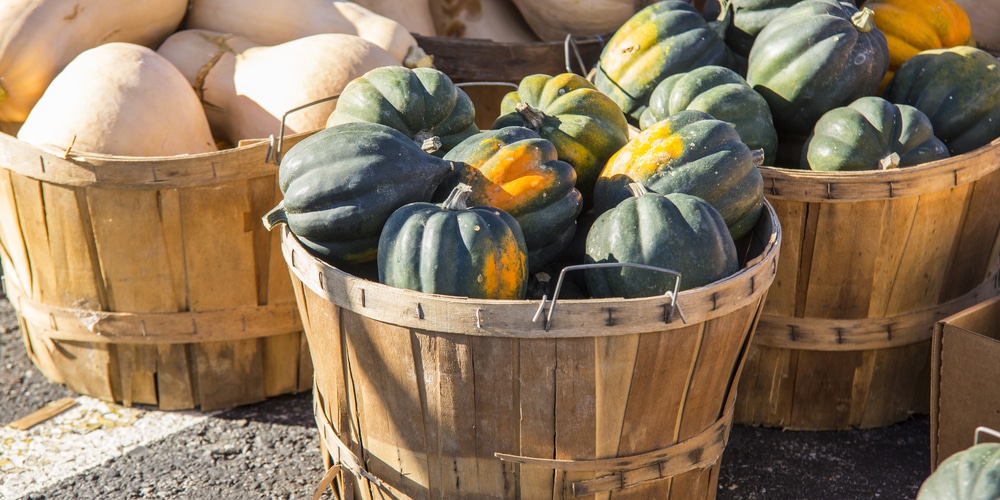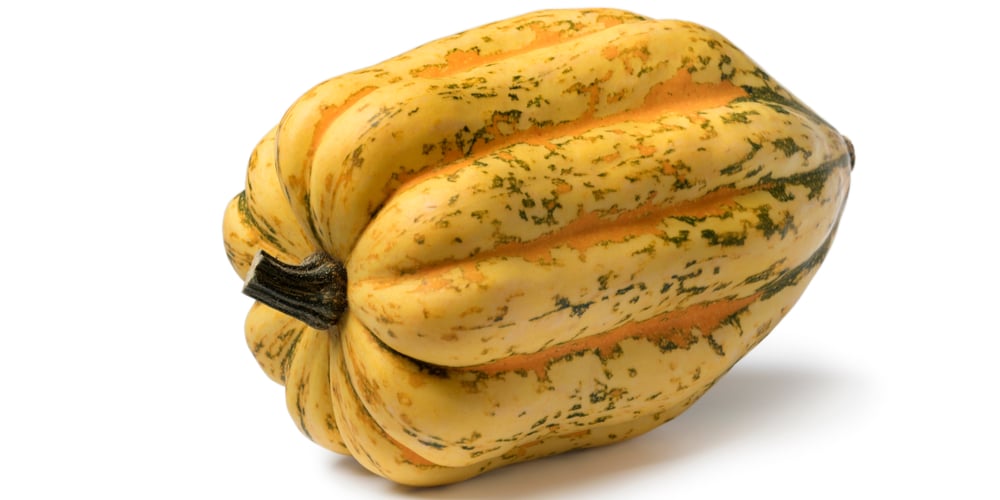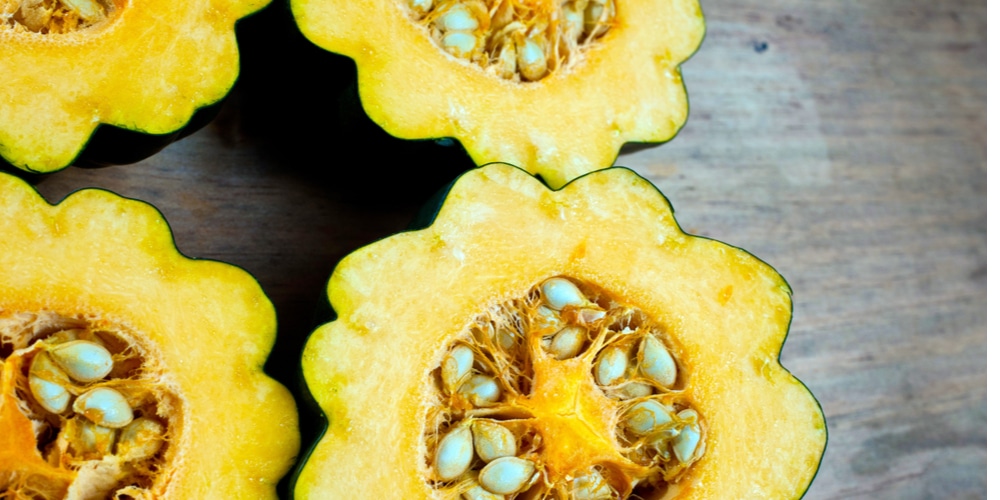A beautiful thing about harvesting your own acorn squash is that, unlike other vegetables, there’s no need to worry about whether or not they’re in season. Once they’re ripe, they’re yours for the taking – and boy, are they worth the wait.
There are, however, a few things to keep in mind when picking acorn squash. For starters, ensuring that the vegetable is ripe is vital. Here are a few ways to tell if an acorn squash is ready for harvest:
When Should You Pick an Acorn Squash?
Depending on the variety of acorn squash, they can be ready to harvest anywhere from 60-100 days after planting.
However, there is a sweet spot for picking them. Too early, and they’ll be full of watery, flavorless flesh. The best time to pick your acorn squash is when the skin has turned a deep, golden-yellow color and the stem has started to dry out and brown.
The best time to pick them is determined by a few factors, such as the weather and how big you want them to be. Here are some signs to check:
Color
One of the most notable signs that acorn squash is ready to harvest is its color. The skin of the squash should be a deep, solid green – if there are any patches of yellow or white, it isn’t quite ready yet.
The part that has been in contact with the ground will start to turn yellow or orange first. This is perfectly normal, so don’t be alarmed!
Size and Shape
Acorn squash can range in size from six inches to two feet long, but they are typically around eight to ten inches when they’re ready to harvest. As for shape, they should be more or less oval-shaped with a rounded bottom.
Woody Vines
Unlike other squash varieties, acorn squash vines are woody and shouldn’t be eaten. If the vine is still soft, it means the squash isn’t ready to be picked. The tougher the rinds are, the better.
Ripeness Test
If you’re still unsure about whether or not an acorn squash is ripe, there’s always the trusty ripeness test. When you give your squash a gentle squeeze, it should yield slightly to the pressure but still feel firm overall. If it feels mushy, it’s past its prime.
Harvesting Acorn Squash
The perfect acorn squash is one that’s deep in color and has a dull, matte finish. If the skin is shiny, it means the squash isn’t quite ready yet. Although the vegetable can stay on the ground for a few days after it’s ripe, it’s important to take note that these vegetables aren’t frost-resistant.
Before the first frost hits, make sure to harvest all of your acorn squash, so they don’t go to waste. The first heavy frost occurs anywhere from late September to early November, depending on where you live.
When harvesting, cut the squash off of the vine using a sharp knife or shears. Be careful not to damage the rest of the plant – you don’t want to inadvertently harm next year’s crop!
Storing Harvested Acorn Squash
One of the best things about acorn squash is that they can last for months if stored properly. They can go on for several months when stored in a cool, dark place with good ventilation.
The ideal storage temperature for acorn squash is between 50-55 degrees Fahrenheit. Any warmer and they’ll start to rot; any cooler and they’ll develop freezer burn.
Acorn squash can also be stored in the fridge, although it’s important to keep them away from other fruits and vegetables. Fruits give off ethylene gas, which can cause the squash to spoil faster.
You may want to wash your acorn squash before storing them, but it’s not necessary. If you do choose to wash them, make sure they’re completely dry before putting them away. Doing this will help to prevent mold and mildew from forming.
If you want your acorn squash to last even longer, you can also Freeze them. To do so, first, wash and cut the squash into pieces. Remove the seeds and pulp, then cut the flesh into cubes or slices.
Next, blanch the squash by boiling it for three minutes. This will help to preserve its color and texture. Finally, transfer the squash to a freezer-safe container and store it in the freezer for up to six months.
When to pick an acorn squash: Final Thoughts
When it comes to acorn squash, timing is everything. Keep an eye out for the signs that they’re ripe and ready to harvest, and you’ll be rewarded with a delicious, nutritious vegetable that will last you all season long!
Related article: Winter Squash Companion Plants


